Several stone towers guard the Via Cassia as it winds its way north from Rome into what was once Etruscan territory. Ivy-covered and discreet, they blend into the countryside with only their jagged tops peeking above the Mediterranean pines.
Castello at Lake Bracciano - then - Hackert - 1794
Once part of an extensive signal system, these towers were used to send messages by means of night time torches. Thus, warnings of pirate incursions and other emergencies were relayed in a matter of hours from the sea coast, where other towers stood guard, as far inland as Umbria.
Entering the Orsini-Odescalchi castle with old friends visiting from Moscow
As one drives (or takes the train) into the Lazio countryside, towers and other bold constructions are a part of the landscape- it seems that every other hilltop is crowned with a castle and its surrounding village. This extensive system of forts, castles and fortified towers was needed to guard the territory which was once the Papal States and which today roughly coincides with the boundaries of Lazio. Even now, the area contains at least 80 localities with the term “castello” conserved in their names: Castelmadama and Castelnuovo di Porto near Rome are just two.
During medieval times, feudal lords lived in these strategically located fortresses on the crests of hills overlooking roads and waterways, ready to defend the territory entrusted to them by the popes. In the past the rocca or castle was little more than a military outpost with few comforts but offering such security in time of invasion that a few houses soon surrounded the castle for protection and slowly gave birth to the hilltop towns which now dot the landscape.
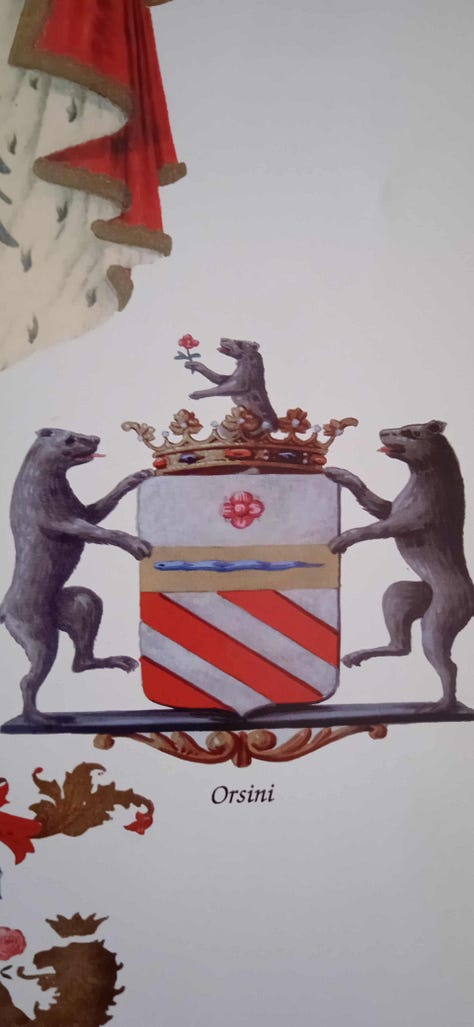

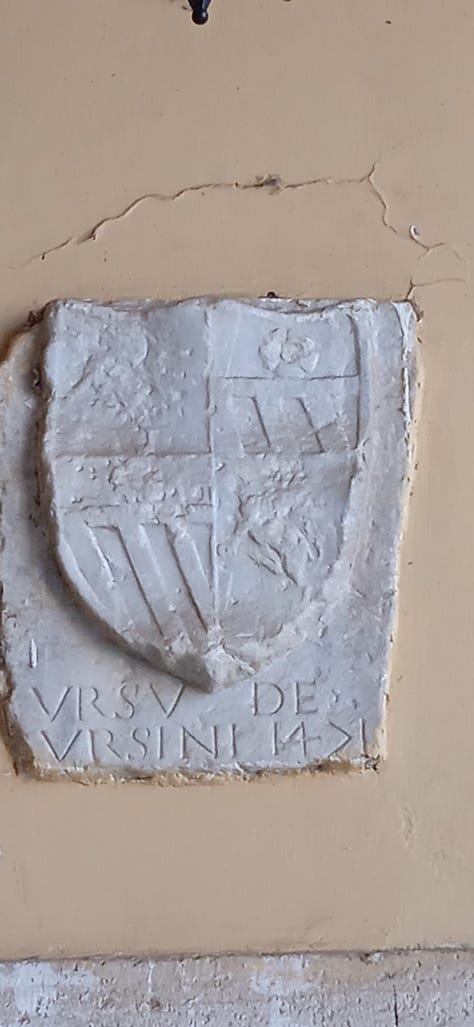
Orsini family symbols - bears, an eel and the rose (photos from heraldry expert Marc’Alvise de Vierno)
With the invention of gun powder and powerful firearms, castle/fortresses lost some of their strategic importance. Newly built castles no longer included outdated square towers - these were substituted for round ones that could better withstand the onslaught of cannon balls. Battlements were removed in many cases and often the lord of the castle transformed the building into a more comfortable palace meant for year-round or summer living.
Antoniazzo Romano fresco cycle
As the Renaissance dawned, artists were hired to fresco the main rooms while tapestries warmed the walls of the family’s private living quarters. Where kitchen herbs once grew, ornate Italian gardens contributed to make the foreboding military rocca into a pleasure palace. Many grandiose castles are still owned by the Roman baronial families that built and defended them for centuries, others are in the hands of the Italian state or of private persons and several are open to visitors as I mentioned on the previous article. They usually are found at points of contact, communication or transport.
Along the Mediterranean coast there are a string of them from Civitavecchia to Santa Marinella, Santa Severa, Palo, Ostia, Nettuno, Torre Astura, San Felice Circeo and further south to Terracina and Gaeta. Check a map of the Italian coastline to see where these castles are located- many are now popular beach areas.
Other castles protected the courses of rivers such as those perched high above the Tiber river at Lunghezza and Nazzano, The castles of Bolsena and Bracciano still dominate these beautiful volcanic lakes in central Italy. Other castles were built to protect bridges-(Castello dell’Abbadia at Vulci) while at Isola del Liri and Nepi castles were built over waterfalls - a most unusual spectacle!

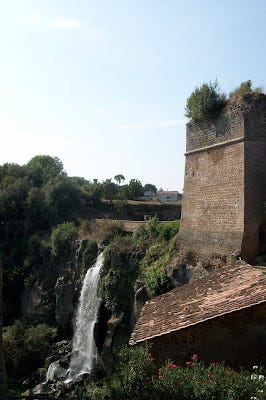
Castles over waterfalls - Isola del Liri and Nepi ‘s Borgia castle
During the torrid days of high summer the perfect day trip to escape the heat of Rome should include a cool swim, then lunch at a trattoria and a bit of cultural tourism. Bracciano has all these amenities and is just a short train or car trip north of Rome.
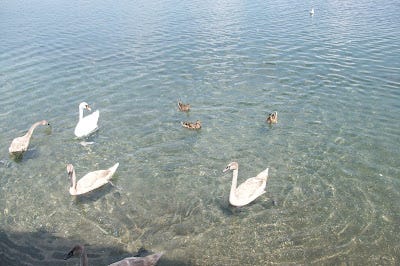
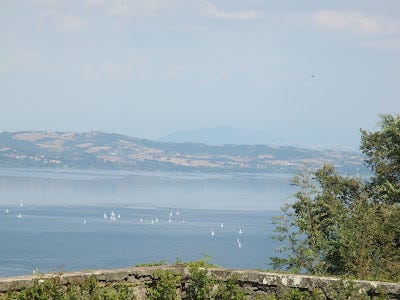
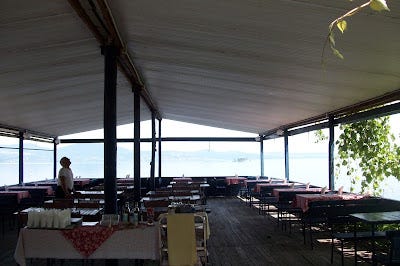
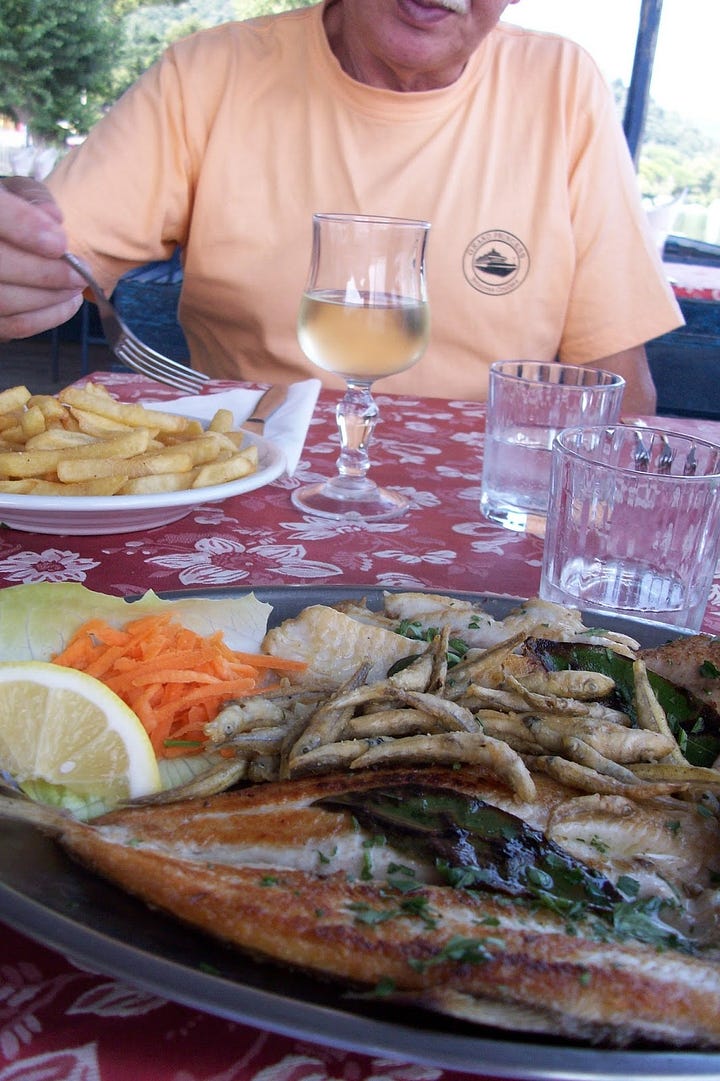
a lakeside lunch -maybe a swim - then a visit to the castello
The imposing silhouette of the castle at Bracciano can be seen from quite a distance - with its perfectly conserved towers it dominates the lake and the town.
Bracciano - now - the town and castle (photo by Walter Bianchi)
It was constructed by Napoleone Orsini, the most powerful baron of the time and by his son, Virginio, during the last decades of the fifteenth century. The elder Orsini, a famous soldier, probably helped design the military structure while to Virginio we owe the refined cross-barred windows, covered loggia and the general softening of the military aspects. The result is a masterpiece of late Renaissance architecture -even the pope was jealous.
The family produced numerous saints, popes, cardinals, Roman senators and Grand Masters of the Knights of Malta and Templars. Twelve kings’ daughters entered the Orsini family over the years as brides while eleven Orsini girls became queens - an impressive accomplishment! The heraldic symbols of the family - the Orsini bear and rose - decorate the castle and can be found throughout Italy. This castle was taken over by the Odescalchi family in 1696 and is still owned and run by the Odescalchi Foundation.

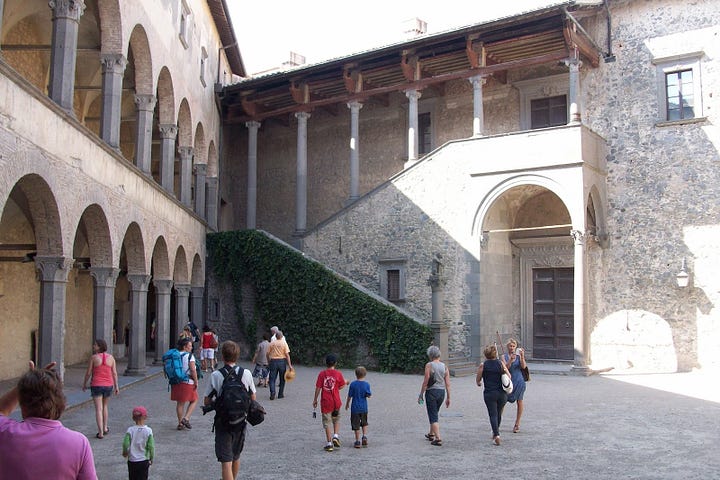
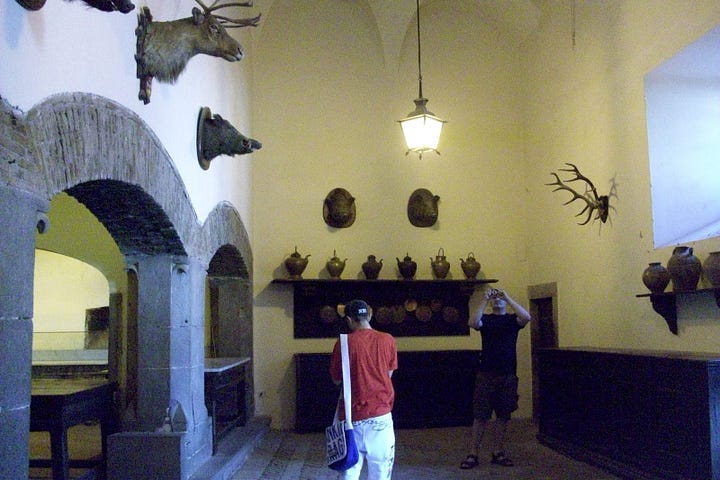

Practical information : Before you go, be sure to watch this beautifully produced video for practical information about the castle and its history. Note that visits to the castello are free on Tuesdays for those over 65.
Bracciano’s train station is located half way between Rome’s Stazione San Pietro and Viterbo. This makes it a perfect “meeting point” for friends who live in, or are visiting, Rome. I’m planning a visit in June. Its a 20 minute train ride from my place. Would some readers like to meet up there ?
My former student, Walter Bianchi, lives in Bracciano and is quite an expert on castles and hotels since his sister has some marvelous castle accomodations in Puglia. Here are several places he recommends for eating in Bracciano town: Osteria del Borgo, Trattoria del Castello, Enjoy, Cucina ai Monti and Casa Di.
Curiosity - roses and an eel-like creature are sculpted on one of my fireplaces …. could it have come from another Orsini castle?
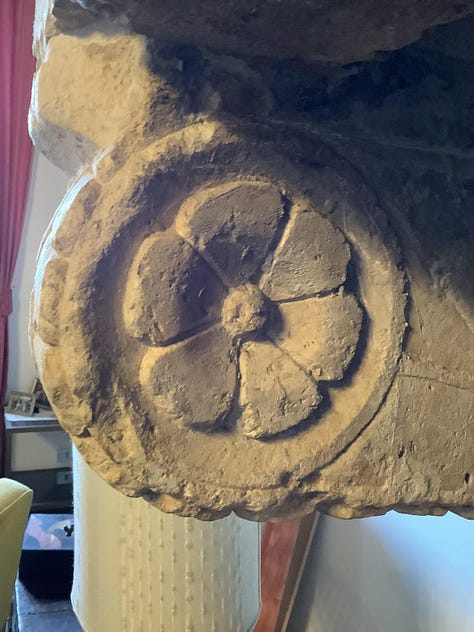
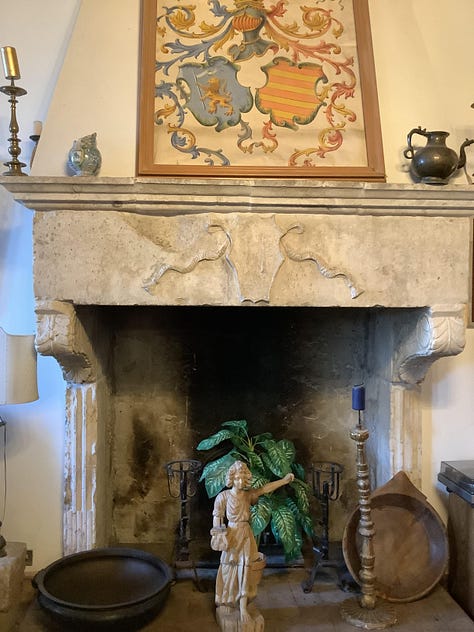
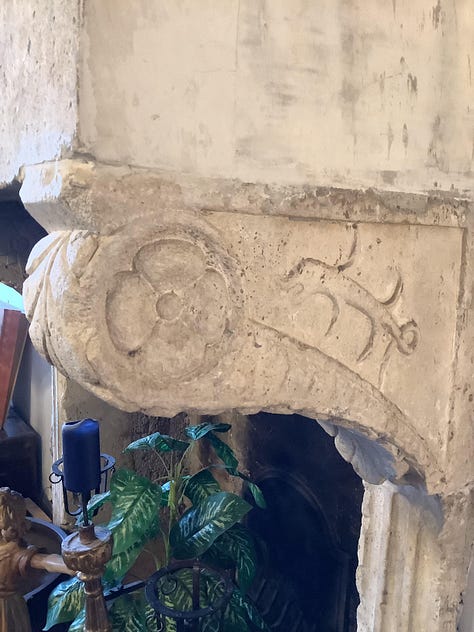





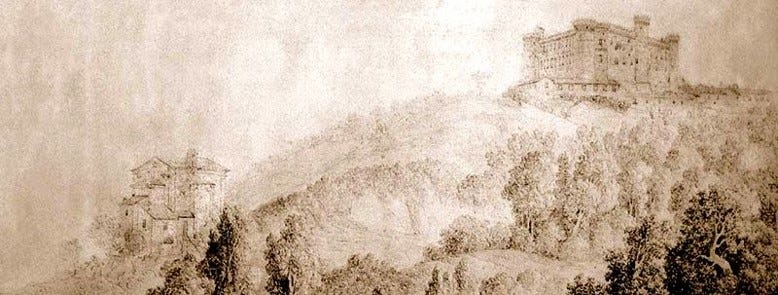
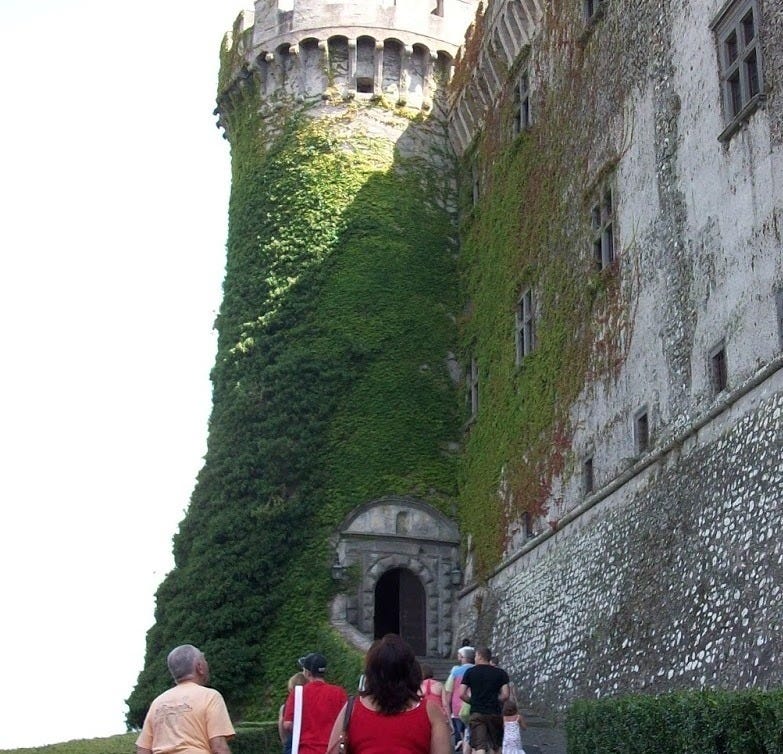

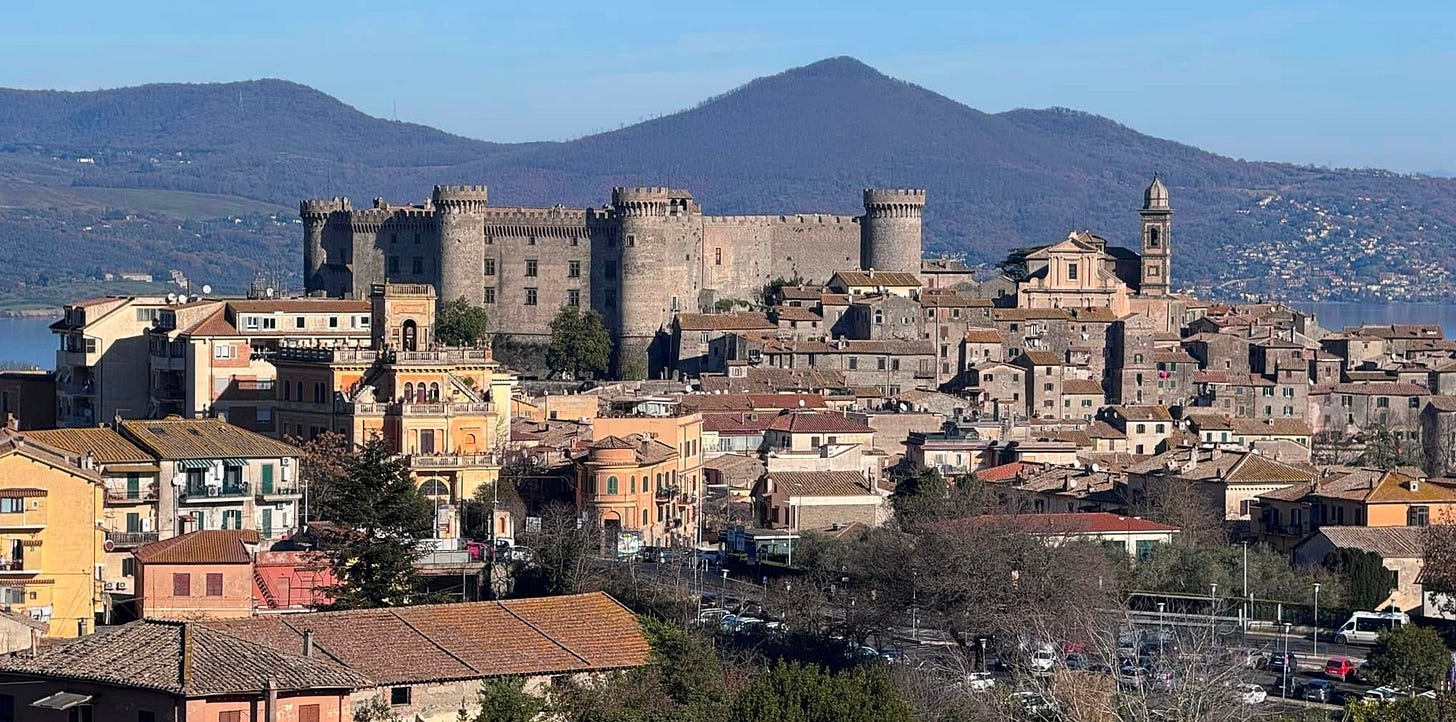
Fascinating story! Definitely want to make a trip there this spring. And even a train from San Pietro— it’s perfect!
Very nice article... greatly enjoyed reading it. I recently semi-retired and now live on the shores of the lake. The restaurant with the deck is La Tramontana ... my family has been coming here since the 60s.